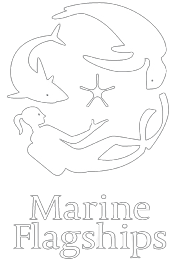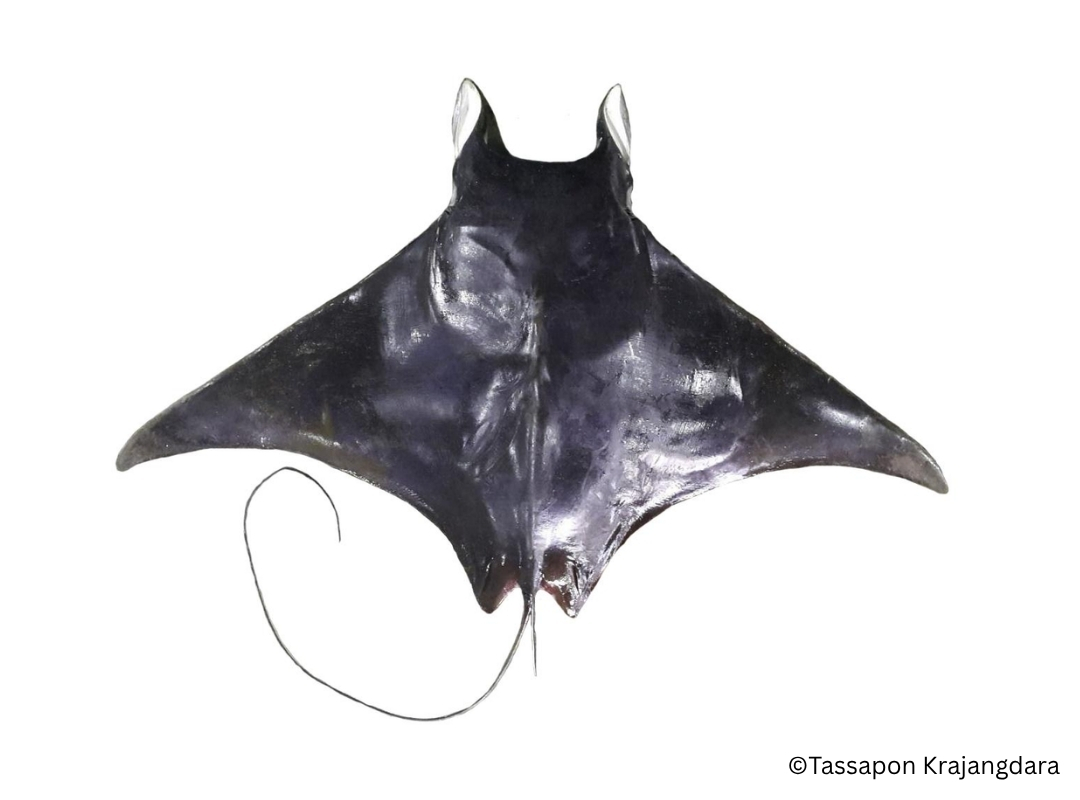Species Name
Spinetail Devil Ray
Scientific Name
Mobula mobular
Family Name
Mobulidae
IUCN Status
Endangered
Large devil ray with broad rhomboid disc; head and cephalic fins short; thick black band on top of head that stretches from eye to eye, clearly darker than surrounding background colour; dorsal surface slate blue, with lighter grey colouring surrounding a black headband and fin edges; white-tipped elongated dorsal fin.
Biology
Length: The species' largest recorded size is 350 cm DW, though there is a substantial geographic variance in size throughout its range. Females reach maturity at a disc width (DW) of 215-240 cm, whereas males do so at a disc width (DW) of 200-220 cm.
Gestation period: 12 months.
Littter size: Reproduction is aplacental matrotrophic with a single large pup of 90-160 DW.
Life Expectancy: Female age-at-maturity is estimated as 5–6 years and maximum age estimated as 20 years; generation length is therefore 12.8 years.
Diet: Uses its cephalic fins as a funnel to feed on small pelagic fish and crustaceans, capturing or filtering the food with the help of its unique gill plates.
Habitat and Distribution
Habitat: The Spinetail Devil Ray is a pelagic species that resides in coastal and continental shelf waters.
Distribution: The Spinetail Devil Ray is found all over the world in temperate and tropical seas. It is notable because it is present in the Mediterranean Sea but not in the Red Sea. The species moves at a large scale, up to 1,800 kilometres per day at a minimum speed of 63 km per day, which is presumably influenced by seasonal changes in prey availability.
Depth: It spends the majority of its time in less than 50 m of water but occasionally dives to depths of 1,112 m.
Known landing centres: Digha Mohana, Royapuram Fishing Harbour, Cuddalore Fishing Harbour, Nagapattinam Fishing Harbour, Junglighat, Burmanallah, Wandoor, Dignabad, Cochin Fisheries Harbour, Malvan, Veraval, Mangrol, Porbander, Okha and Thoothukudi
Commercial Value
The meat from mobulids is often used for food and shark bait or attractant and the skin is sometimes used for leather products (shoes, wallets, and knife handles); gill plate has a high demand in the Chinese medicinal market, 61,000kg of gill plates are traded annually at a value of $11.3 million.
Threats
Bycatch in commercial fisheries specifically tuna purse seine fisheries, increased demand for gill plates which are thought to have medicinal properties. As epipelagic feeders the presence of plastic in their system could lead to complications like digestive tract damage, blockage of nutrient absorption and high level of toxins causing disruption of biological processes and can also lead to the death of the individual; reduction in the extent and the quality of their habitat is one of the major threat as well.
References
- Couterier et al., (2012). Biology, ecology and conservation of the Mobulidae
- Croll et al., (2015). Vulnerabilities and fisheries impacts: the uncertain future of manta and devil rays.
- Lawson et al., (2017). Sympathy for the devil: A conservation strategy for devil and manta rays. PeerJ. 5. e3027. 10.7717/peerj.3027.
- Pillai, S Krishna (1998) A note on giant devil ray Mobula diabolus caught at Vizhinjam. Marine Fisheries Information Service, Technical and Extension Series, 152. pp. 14-15.



